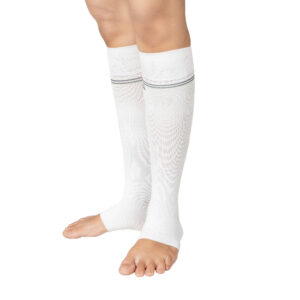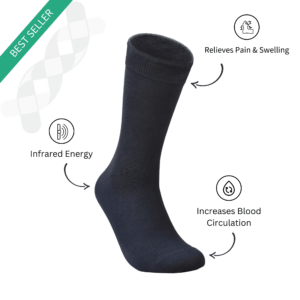Hypoglycaemia is a condition when a diabetic, particularly a type 1 diabetic, has a sudden drop in their sugar levels. It can happen from various reasons. Some of the most common reasons are as follows:
- They have taken their insulin prior to their meal but got busy and skipped the meal
- They took a high dose of insulin and had a very light meal
- They ignored milder symptoms of hypoglycaemic shock
- They suddenly changed their lifestyle without changing their eating and insulin patterns
All the above factors will lead to a sudden increase in insulin, which will digest the blood sugar even if the diabetic has less blood sugar in their system. In our earlier articles we have discussed what a diabetic should do during a hypoglycaemic shock. In this article we are specifically addressing people who are around diabetics, your friend or family member may have hypoglycaemic shock. You may just be a passer-by who has suddenly witnessed a diabetic faint because of low blood sugar. How can you help? Remember the tips you learn from this article can save someone’s life.
Check For Symptoms of Hypoglycaemia
If the person has a history of diabetes and if they complain of dizziness, hunger and excessive sweating, check their pulse. If you notice a rapid irregular heartbeat, it is likely that they are having a hypoglycaemic shock. Ask them if they have chest pain because these symptoms are common in heart attacks as well.
If you suddenly see someone fainting on the road or in public transport, check their heartbeat. If they have fainted from low blood sugar, you will notice a rapid irregular heartbeat. Check for signs of excessive perspiration on their forehead, underarms, back etc.
Call The Ambulance
If the person has fainted, you must call the ambulance immediately. In situations like this, seconds are very important. So, make sure you call for medical assistance while you work to save someone’s life. If you are in a local train, safely take them off the next station before you can call the ambulance or take them to the clinic inside the station.
Hypoglycaemia Supplies
If you live with a diabetic, you should know where they keep all their diabetic supplies like their glucose tablets/gels, insulin, glucagon shot kits, testing kits etc. It will help in emergency situations like this.
The situation changes when you are with a stranger who you suspect to have fainted because of hypoglycaemia. While you wait for help to arrive, you can check in the patient’s bag for diabetic supplies. Type one diabetics must carry a health card and emergency glucagon shot kits for moments like this.
How to Use a Glucose Testing Kit
A diabetic must have a glucose testing kit at hand. When in the house or on the go, so make sure you find their glucose testing kit and check their glucose count. Each testing kit works slightly differently from each other but we have listed the basic workings of a glucose testing kit.
In order to test the blood glucose you will need:
- Glucose Meter
- Testing strips
- Lancing device (Pricking Device)
- Lancelet (The needle)
- Cotton
- Hand wash/hand sanitiser
If you live with a diabetic you should know exactly where all these things are kept and if you are helping an unconscious diabetic outdoors, you should check their bags for the above items. In both situations, make sure you do this after you have already called the ambulance.
Begin by washing your hands and wash the patients hand that you will prick. If you are outside, you can use plain water to clean your hands and the hand of the fainted person. Make sure your hands are dry before you proceed.
Remove the protective seal on the lancelet and insert it in the lancing device. Take out a brand new test strip and insert it in the glucose meter. You will see an opening in the meter that resembles a USB port. That’s where you insert the unused testing strip. Once you have everything ready, switch on the meter and bring the lancing device to the diabetic’s finger to prick it. It will be a quick prick and you will have to press the finger gently to draw blood. Once you see blood, gently press it to the bottom of the strip and you will get a reading. If the meter reads below 70 mg/dl it means that the person is hypoglycaemic. Remember to press a cotton ball around the pricked area to stop the blood from flowing.
How to Use a Glucagon Shot Kit
If the diabetic person is unconscious, you should not give them anything orally as the patient might choke. Glucagon shots are the best way to save their life. A glucagon shot usually has all the supplies for a single injection and the instructions are always written on the glucagon shot kit. In the kit you will find:
- A bottle of glucagon which is a dry powder
- A syringe of clear liquid
In order to administer glucagon you must:
- Remove the seal from the bottle
- Remove the syringe protector from the syringe
- Insert the syringe in the bottle and inject the clear liquid in the bottle
- Shake the glucagon bottle until the liquid becomes clear and draw the liquid with the help of the syringe.
- Most glucagon manuals will tell you how much to inject depending on the reading you received in the testing kit.
- Hold it at a 90 degree angle and inject the entire needle of glucagon on their thigh, stomach, or buttocks.
- Once the person starts to regain consciousness give them glucose tablets or a sweet juice or aerated drink to have to slowly bring their sugar levels up again.
Note: Avoid chocolates or ice creams that are slightly solid during this time. Solids require longer to digest which delays the time the glucose enters the blood. This is why, you should give your diabetic friend a sweet liquid or glucose tablets. If you have called the ambulance first, you may not have to inject the needle but it is always important to know what you can do to save a dear one in need. We hope this article was helpful. Do you know someone who needs to know how to use diabetic supplies, please share this article with them. Let’s do our part to share this information as much as we can. It can help save someone’s life!




























